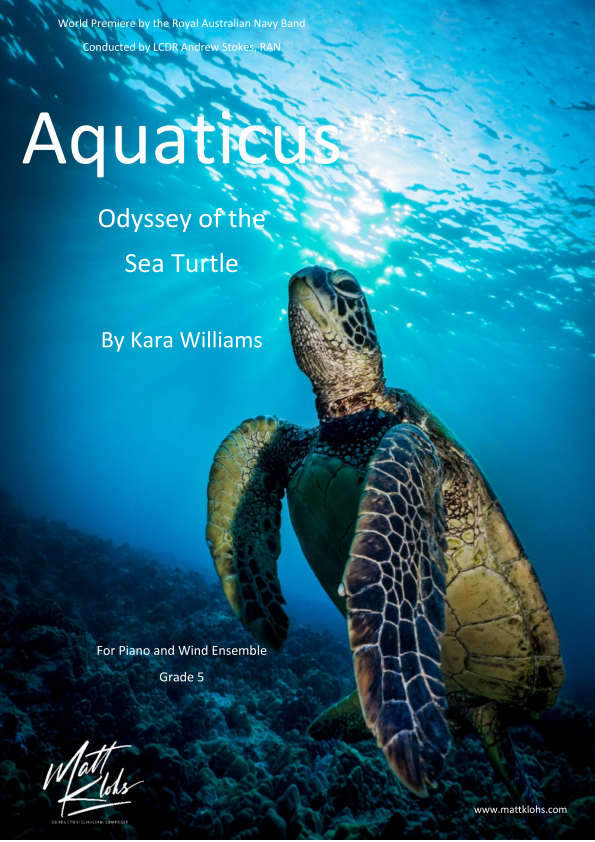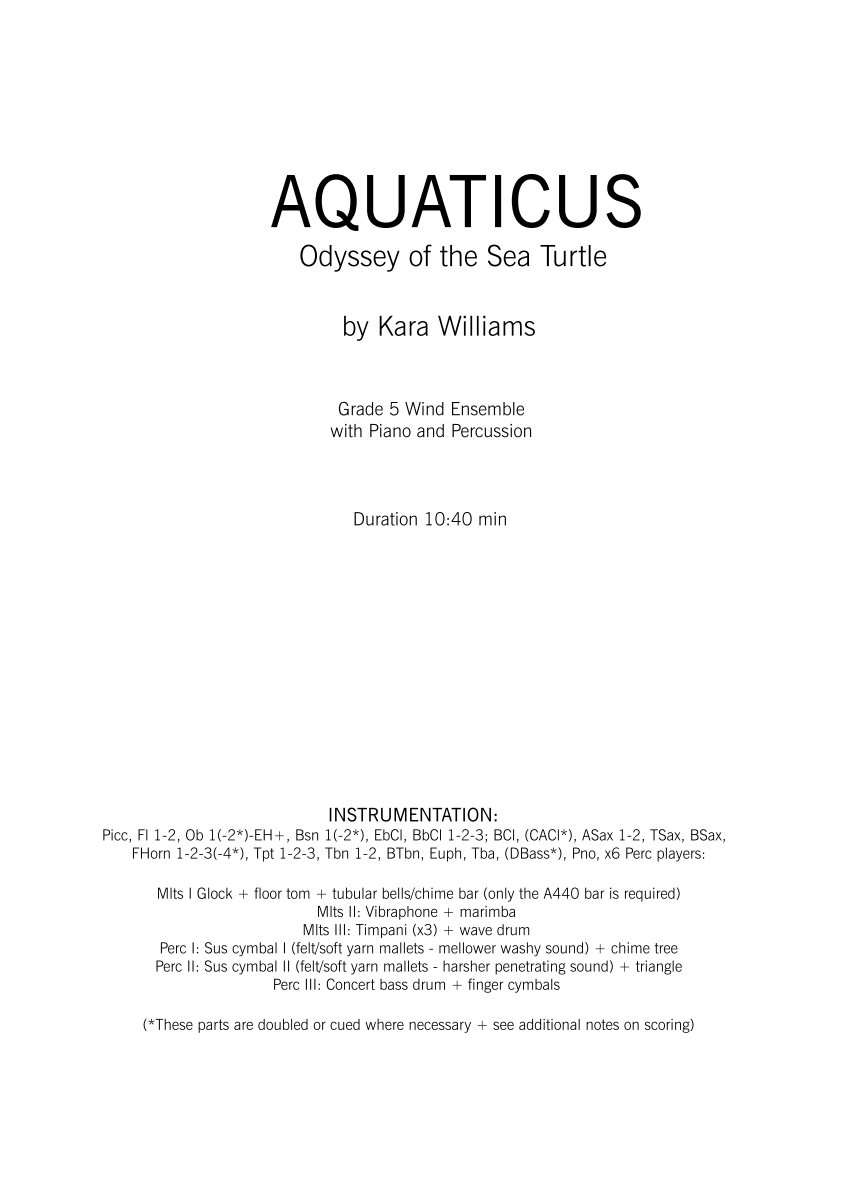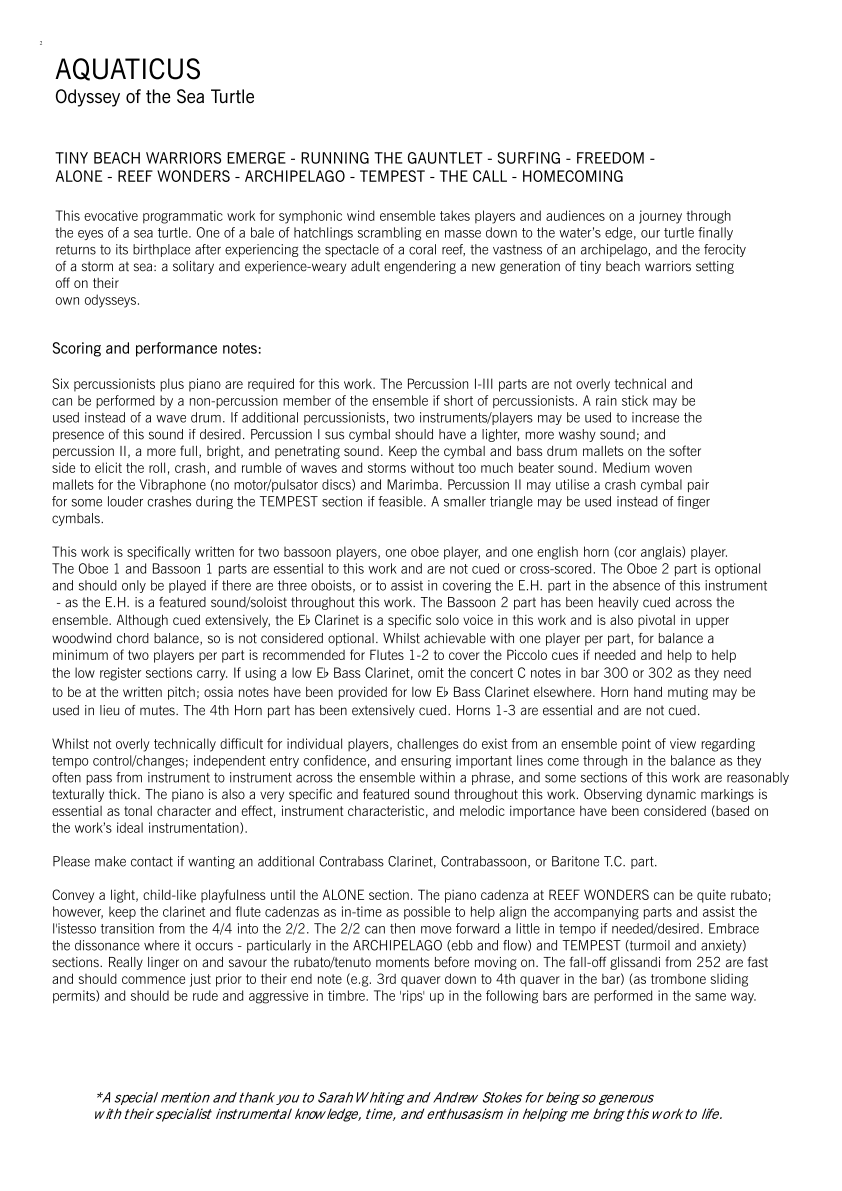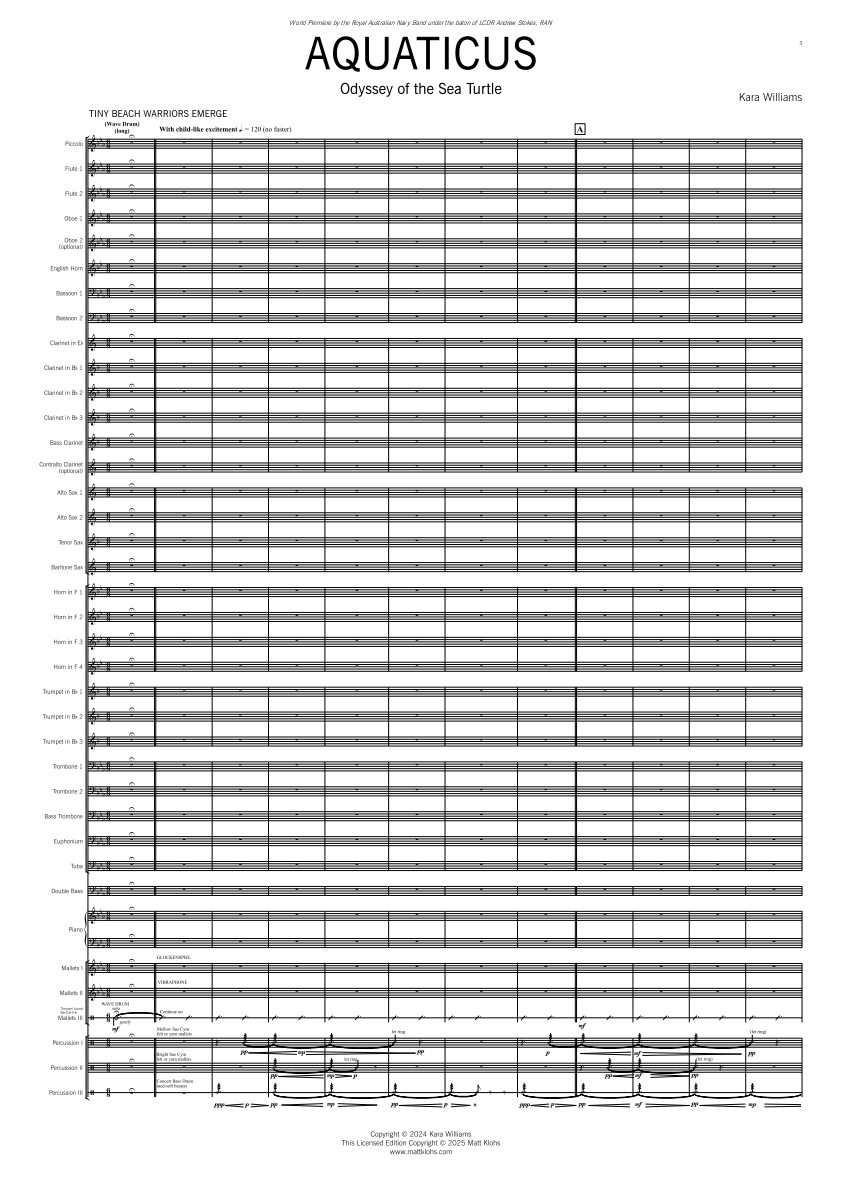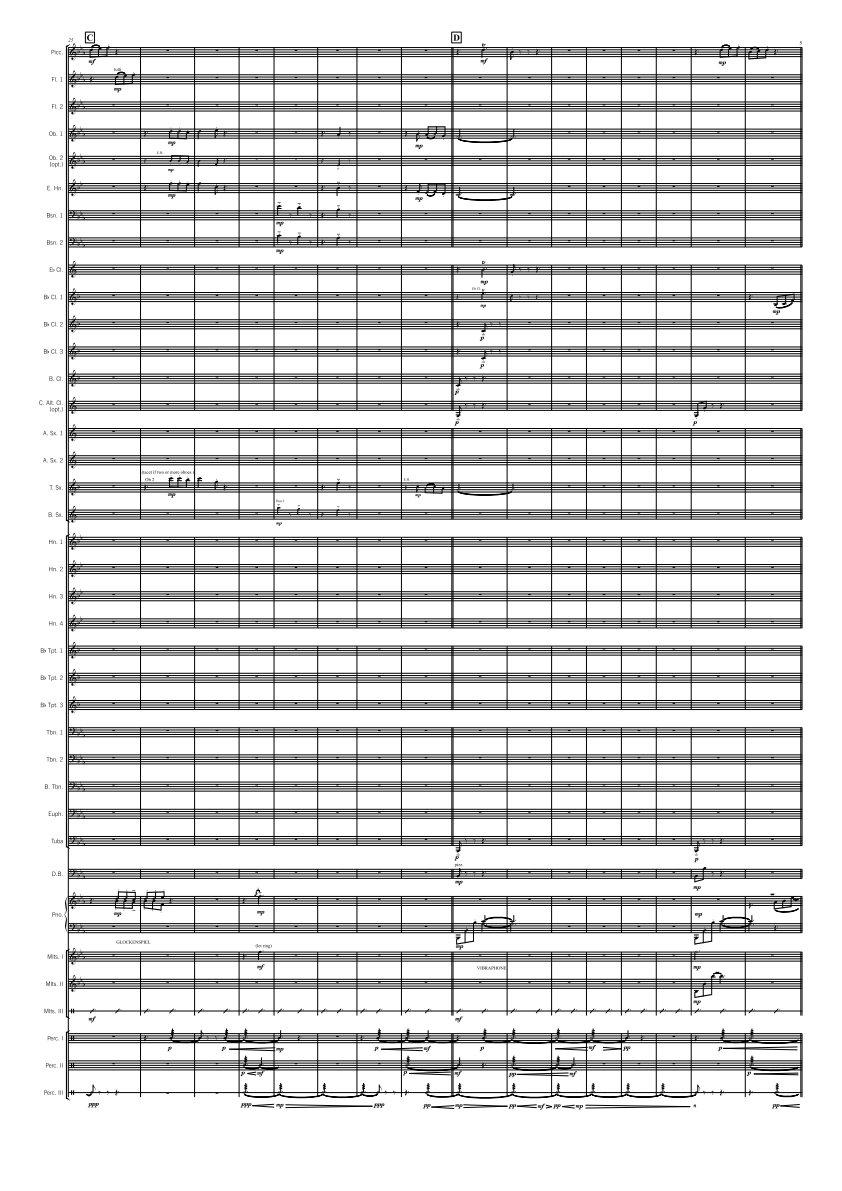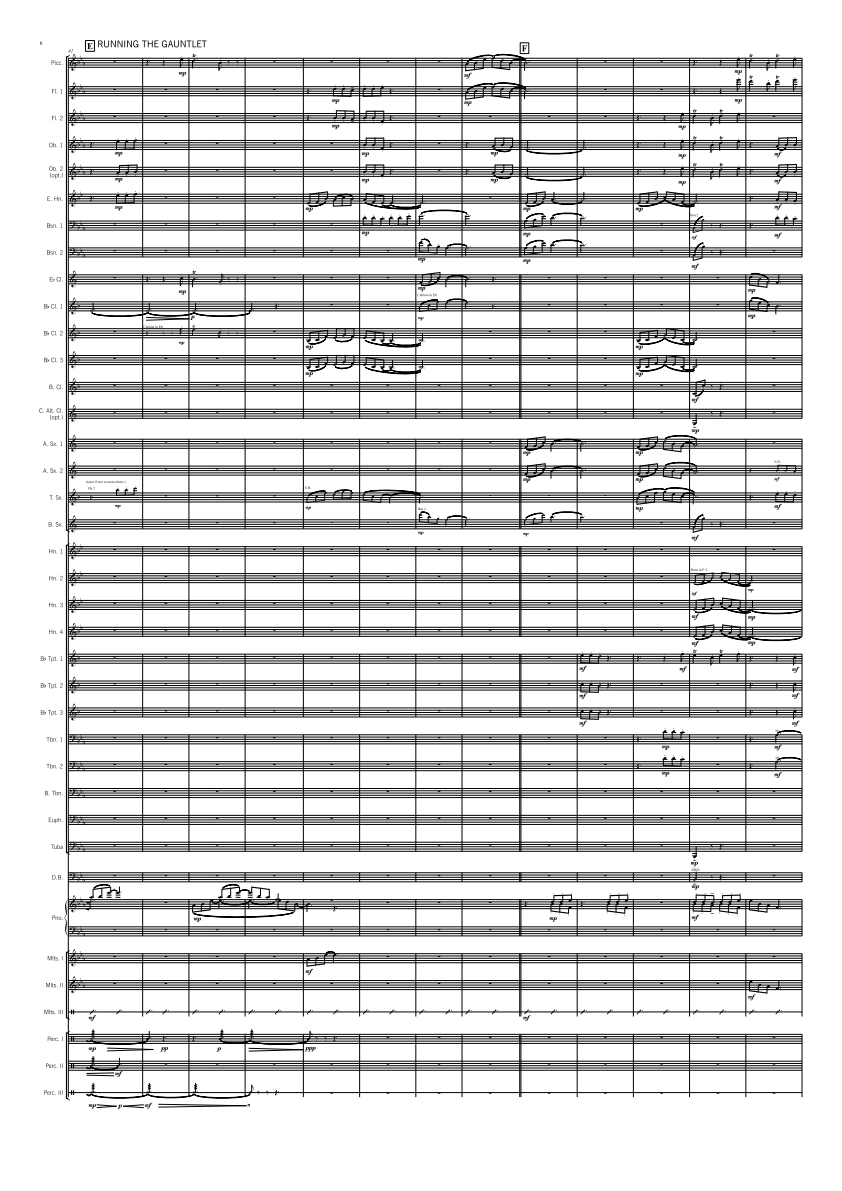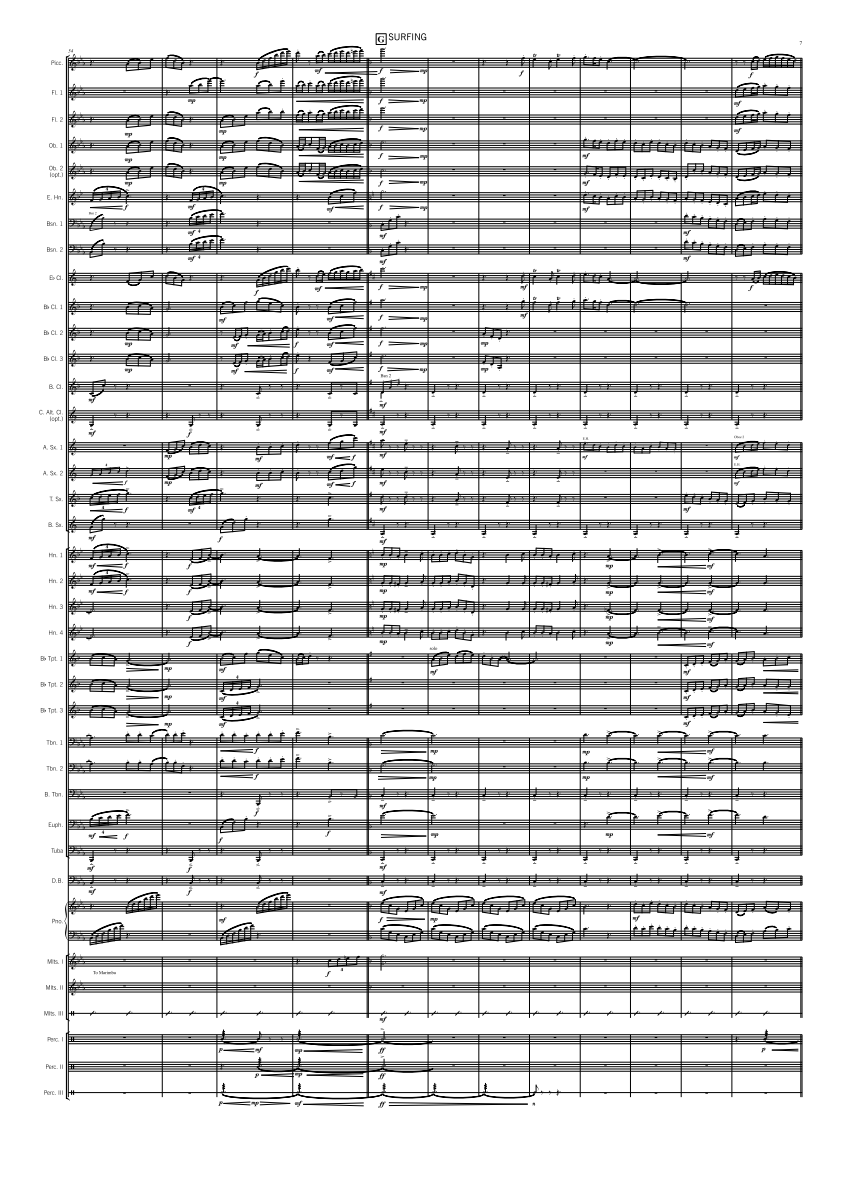Description
Duration 10:45 min
---------------------------
AQUATICUS - Odyssey of the Sea Turtle
TINY BEACH WARRIORS EMERGE - RUNNING THE GAUNTLET - SURFING - FREEDOM -
ALONE - REEF WONDERS - ARCHIPELAGO - TEMPEST - THE CALL - HOMECOMING
Program Notes
This evocative programmatic work for symphonic wind ensemble takes players and audiences on a journey through the eyes of a sea turtle. One of a bale of hatchlings scrambling en masse down to the water’s edge, our turtle finally returns to its birthplace after experiencing the spectacle of a coral reef, the vastness of an archipelago, and the ferocity of a storm at sea: a solitary and experience-weary adult engendering a new generation of tiny beach warriors setting off on their own odysseys. - Kara Williams
Scoring and Performance Notes
Six percussionists plus piano are required for this work. The Percussion I-III parts are not overly technical and can be performed by a non-percussion member of the ensemble if short of percussionists. A rain stick may be used instead of a wave drum. If additional percussionists, two instruments/players may be used to increase the presence of this sound if desired. Percussion I sus cymbal should have a lighter, more washy sound; and percussion II, a more full, bright, and penetrating sound. Keep the cymbal and bass drum mallets on the softer side to elicit the roll, crash, and rumble of waves and storms without too much beater sound. Medium woven mallets for the Vibraphone (no motor/pulsator discs) and Marimba. Percussion II may utilise a crash cymbal pair for some louder crashes during the TEMPEST section if feasible. A smaller triangle may be used instead of finger cymbals. This work is specifically written for two bassoon players, one oboe player, and one english horn (cor anglais) player. The Oboe 1 and Bassoon 1 parts are essential to this work and are not cued or cross-scored. The Oboe 2 part is optional and should only be played if there are three oboists, or to assist in covering the E.H. part in the absence of this instrument - as the E.H. is a featured sound/soloist throughout this work. The Bassoon 2 part has been heavily cued across the ensemble. Although cued extensively, the Eb Clarinet is a specific solo voice in this work and is also pivotal in upper woodwind chord balance, so is not considered optional. Whilst achievable with one player per part, for balance a minimum of two players per part is recommended for Flutes 1-2 to cover the Piccolo cues if needed and help to help the low register sections carry. If using a low Eb Bass Clarinet, omit the concert C notes in bar 300 or 302 as they need to be at the written pitch; ossia notes have been provided for low Eb Bass Clarinet elsewhere. Horn hand muting may be used in lieu of mutes. The 4th Horn part has been extensively cued. Horns 1-3 are essential and are not cued. Whilst not overly technically difficult for individual players, challenges do exist from an ensemble point of view regarding tempo control/changes; independent entry confidence, and ensuring important lines come through in the balance as they often pass from instrument to instrument across the ensemble within a phrase, and some sections of this work are reasonably texturally thick. The piano is also a very specific and featured sound throughout this work. Observing dynamic markings is essential as tonal character and effect, instrument characteristic, and melodic importance have been considered (based on the work’s ideal instrumentation). Please make contact if wanting an additional Contrabass Clarinet, Contrabassoon, or Baritone T.C. part. Convey a light, child-like playfulness until the ALONE section. The piano cadenza at REEF WONDERS can be quite rubato; however, keep the clarinet and flute cadenzas as in-time as possible to help align the accompanying parts and assist the l'istesso transition from the 4/4 into the 2/2. The 2/2 can then move forward a little in tempo if needed/desired. Embrace the dissonance where it occurs - particularly in the ARCHIPELAGO (ebb and flow) and TEMPEST (turmoil and anxiety) sections. Really linger on and savour the rubato/tenuto moments before moving on. The fall-off glissandi from 252 are fast and should commence just prior to their end note (e.g. 3rd quaver down to 4th quaver in the bar) (as trombone sliding permits) and should be rude and aggressive in timbre. The 'rips' up in the following bars are performed in the same way.
Instrumentation
Picc, Fl 1-2, Ob 1(-2*)-EH+, Bsn 1(-2*), EbCl, BbCl 1-2-3; BCl, (CACl*), ASax 1-2, TSax, BSax, FHorn 1-2-3(-4*), Tpt 1-2-3, Tbn 1-2, BTbn, Euph, Tba, (DBass*), Pno, x6 Perc players:
Mlts I Glock + floor tom + tubular bells/chime bar (only the A440 bar is required)
Mlts II: Vibraphone + marimba
Mlts III: Timpani (x3) + wave drum
Perc I: Sus cymbal I (felt/soft yarn mallets - mellower washy sound) + chime tree
Perc II: Sus cymbal II (felt/soft yarn mallets - harsher penetrating sound) + triangle
Perc III: Concert bass drum + finger cymbals
(*These parts are doubled or cued where necessary + see additional notes on scoring)

